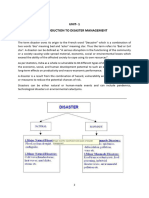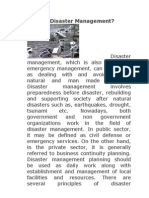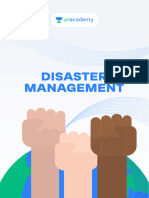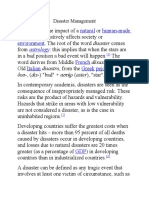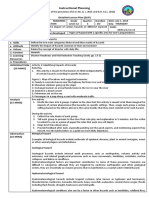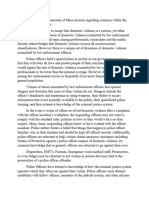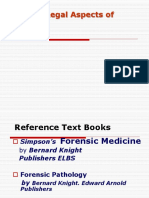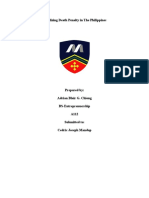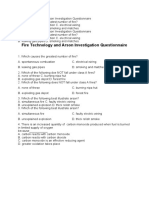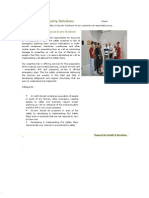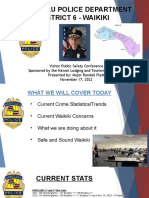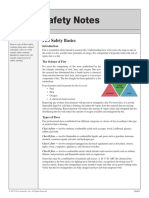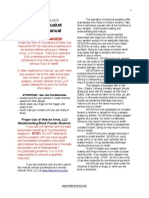0% found this document useful (0 votes)
35 views9 pagesLecture 1
The document defines disasters as sudden events that disrupt communities, causing significant losses beyond their coping abilities. It categorizes disasters into natural, man-made, and hybrid types, and discusses their characteristics, control measures, and responsibilities for disaster management. The National Disaster Management Authority (NDMA) is highlighted as the governing body responsible for coordinating disaster management policies in India.
Uploaded by
devanshrajgoyalCopyright
© © All Rights Reserved
We take content rights seriously. If you suspect this is your content, claim it here.
Available Formats
Download as PDF, TXT or read online on Scribd
0% found this document useful (0 votes)
35 views9 pagesLecture 1
The document defines disasters as sudden events that disrupt communities, causing significant losses beyond their coping abilities. It categorizes disasters into natural, man-made, and hybrid types, and discusses their characteristics, control measures, and responsibilities for disaster management. The National Disaster Management Authority (NDMA) is highlighted as the governing body responsible for coordinating disaster management policies in India.
Uploaded by
devanshrajgoyalCopyright
© © All Rights Reserved
We take content rights seriously. If you suspect this is your content, claim it here.
Available Formats
Download as PDF, TXT or read online on Scribd
/ 9































